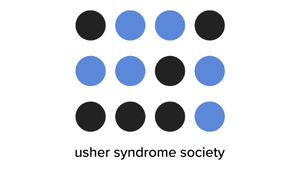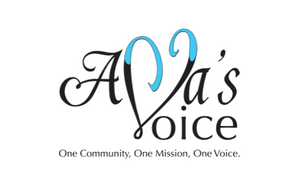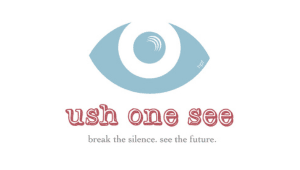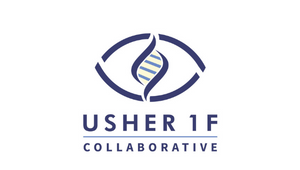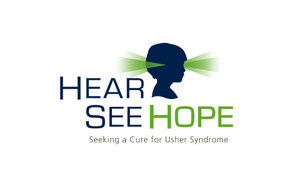(For an overview of the science behind Usher syndrome type 1, review this article from the National Institutes of Health (NIH) National Center for Biotechnology Information (NCBI), last revised October 8, 2020.
Usher syndrome is a recessive genetic disease. This means that a child needs to inherit two copies of the same Usher gene - one from each parent - in order to have Usher syndrome. In most cases, the parents are unaware that they are carriers of the gene as they have NO symptoms.
Usher syndrome type I is characterized by congenital (present at birth), profound (90 dB or higher), sensorineural (nerve-based) hearing loss; vestibular (balance) dysfunction, often manifested as delayed walking (at around 18 months of age or later); difficulty seeing in dim lighting, and the beginning of the loss of peripheral vision due to retinitis pigmentosa (RP) by the age of ten (Keats and Lentz, 2006).
Children with Usher type 1 are usually born profoundly deaf and experience progressive vision loss due to a retinal disease called retinitis pigmentosa (RP). The symptoms of RP first manifest as difficulty seeing in dimly lit areas - or night blindness - and a gradual loss of peripheral vision (tunnel vision). These symptoms will generally be noticed before the age of 10 and progress through adulthood.
Children and adults with Usher type 1 usually have vestibular issues that affect balance. Balance issues manifest early in children with Usher type 1, and they often learn to sit up and walk later than their peers. Balance problems can become more pronounced as visual fields decrease.
There is no intellectual disability associated with Usher syndrome, and with education, children and adults lead active and fulfilling lives. Usher syndrome is not a protective factor, meaning that a child may also inherit or acquire other conditions separate from Usher syndrome.
With genetic testing, Usher syndrome can be diagnosed prenatally or in early childhood. Without genetic testing and awareness of the symptoms of Usher syndrome, adults may not find out until the vision loss from RP became severe enough to interfere with their daily life and safety. Genetic testing - usually through a simple blood or saliva test - is the only way to definitively diagnose Usher syndrome, and to find out which gene is causing the symptoms.
Carriers of Usher Type I
Usher syndrome occurs when an individual inherits two copies of the same type of Usher 1 gene - one from each parent. If an individual has one Usher type I gene and one gene that is not Usher, they are considered to be a "carrier" of the Usher gene. Carriers have typical vision, hearing, and balance. If two carriers of the same gene have a child, there is a 25% chance in each pregnancy that their child will inherit two Usher genes - one from each parent - and that child will have Usher syndrome. It is not uncommon for families to have two or more children with Usher syndrome.
If a child inherits one Usher 1 gene and one non-Usher 1 gene, that child will be a carrier. They will have typical vision, hearing, and balance. It is also possible that a child of 2 carriers will inherit 2 non-Usher syndrome genes, which means that they will not have Usher syndrome and they will not be a carrier. The carrier rate for Usher Type 1B, the most common gene that causes Usher 1, is 1 in 194.
If two people with Usher syndrome caused by the same Usher gene have children, all of their children will have Usher syndrome.
Hearing in Type I
Hearing loss in children with Usher syndrome type 1 is usually severe to profound and present at birth.
Vision in Type I
A person with Usher 1 may become legally blind as a young adult primarily because of severe tunnel vision. Central vision is usually retained into adulthood, allowing individuals to continue to function visually and read regular or large print. Some adults with Usher 1 will lose central vision more quickly, retaining only light perception. The rate of vision loss in type 1 varies, even among siblings.
Balance in Type I
Usher type 1 impacts the vestibular system, which affects balance and spatial orientation. Vestibular feedback lets us know whether we're walking in a straight line, sitting upright, or upside down. Because of this, babies with Usher type I are often late to sit up and late to learn how to walk. It is not uncommon for children with type I Usher to begin walking at 18-36 months. These balance issues are present throughout life and often become more pronounced in low light or as the visual fields decrease.
Physical therapy, occupational therapy, and orientation and mobility training can help improve balance and navigation. Core strengthening activities, like exercise, swimming, and hippotherapy (horseback riding), can also help.
Genes involved in Type I
Usher syndrome type I is further subdivided into 5 subtypes, according to the gene that causes the symptoms. Mutations in the following genes all cause the same symptoms that are known as type 1: MYO7A (type 1B), USH1C (type 1C), CDH23 (type 1D), PCDH15 (type 1F), and USH1G (SANS)(type 1G).
Mutations in these genes account for most cases of Usher syndrome Type I. Mutations in MYO7A are the most common, and found in 39-55% of individuals with type 1 (Keats and Lentz, 2006). An Ashkenazi Jewish founder mutation, R245X, has been identified on the PCDH15 gene, causing Usher 1F, which has a carrier frequency of up to 2.5% in this population. MYO7A, USH1C, CDH23, and PCDH15 mutations have also been reported in several families with recessive non-syndromic hearing loss (no vision loss. In addition, a few families with autosomal dominant non-syndromic hearing loss (DFNA11) have also been described with mutations in MYO7A.
Although these are the most common characteristics of Usher syndrome due to mutations in these genes, there can be variations. Overlapping and atypical presentations have been described for all three types of Usher syndrome. For example some individuals with mutations in type I genes may have a milder presentation (moderate hearing loss and/or a normal vestibular system). In addition, certain genes (MYO7A, USH1C, CDH23, PCDH15, and DFNB31) can cause hearing loss without developing retinitis pigmentosa.
Identified disease-causing mutations in all of these genes include missense, nonsense, frameshift, and splice-site, as well as deletions distributed across nearly all exons.
Usher Type I subtypes
Although all individuals with Usher type 1 demonstrate similar symptoms, the genetic causes differ. Some are more common than others. Usher subtype 1B is by far the most common form of Usher type 1 and accounts for over 40% of all cases. Subtype 1D appears to be next most common and is responsible for about 25% of all cases. Usher IC is not very common in the general USA population, but it is common among French Acadians in Louisiana. Usher 1F and 1G are rare. There is a form of Usher 1F that is common among people with Ashkenazi Jewish ancestry. There is evidence that more Usher 1 subtypes exist but have not yet been identified. Usher types 1A and 1E are not considered to be Usher syndrome.


